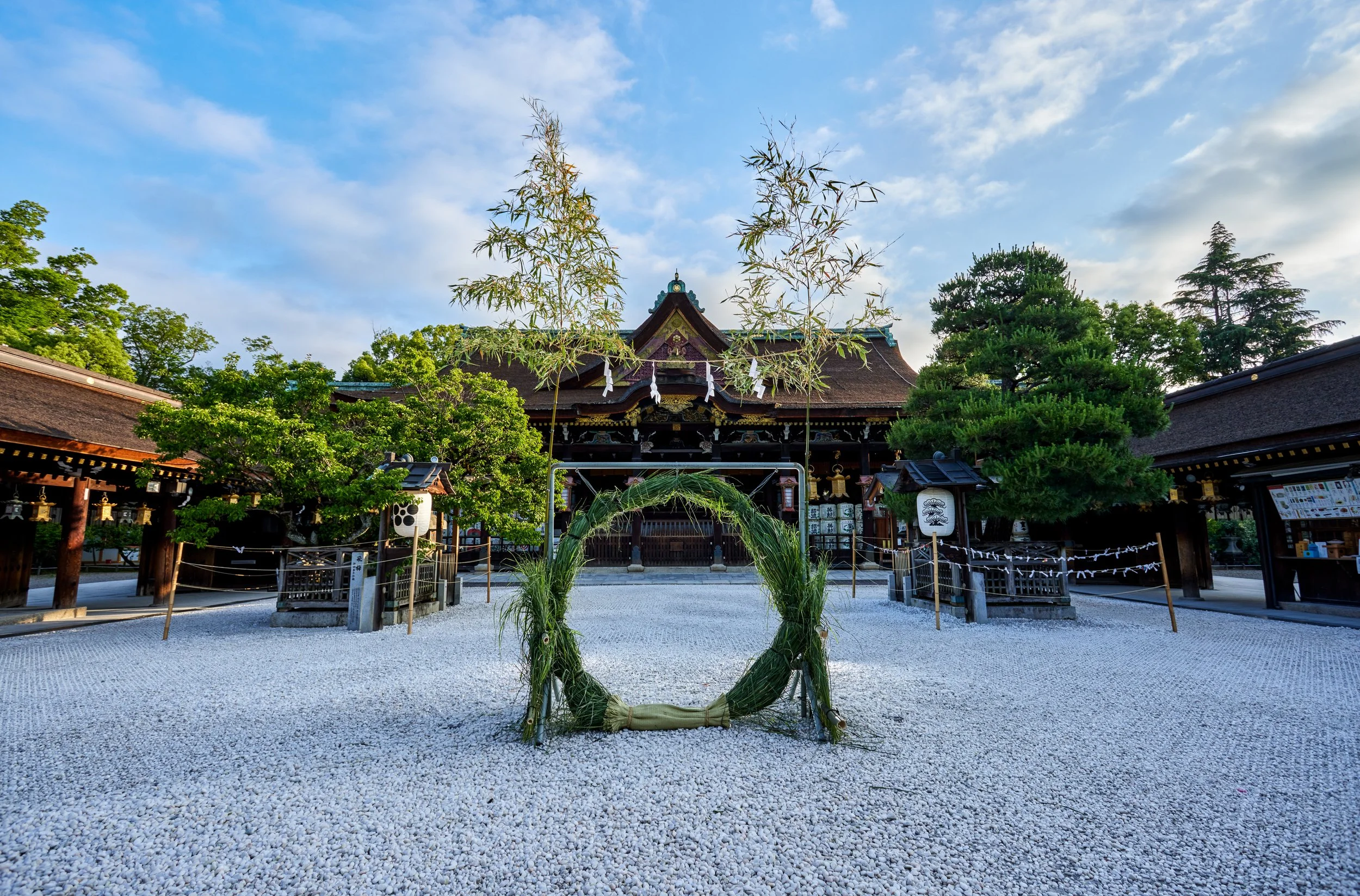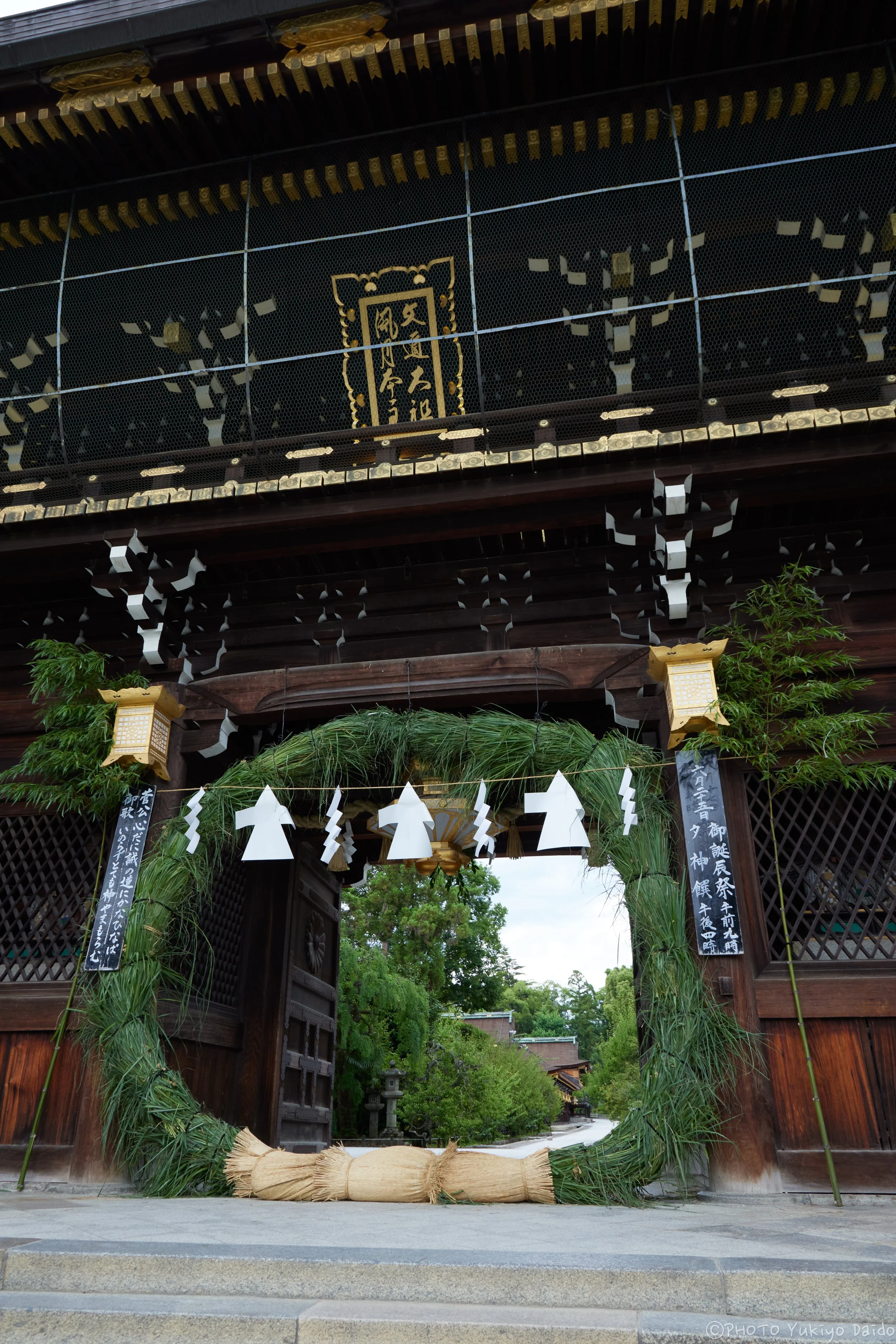Honoring the Spirit of Summer with Tradition
Nagoshi-no Harae - Seasonal Rituals in Kyoto
Chinowa at Kitano Tenmangu Shrine
As Kyoto slides into the lush heart of June, the rhythm of daily life is accompanied by a quiet pulse of sacred tradition. While the rest of the city hums beneath hydrangea-lined streets and intermittent showers, Kyoto’s many shrines begin to prepare for one of the most meaningful seasonal rituals in Japan: Nagoshi-no Harae (夏越の祓), the mid-year purification ceremony.
This ancient practice, still widely observed throughout the country, offers an immersive glimpse into how spirituality, community, and nature continue to intertwine in Japanese culture.
A Ritual of Cleansing and Renewal
Dating back to the Heian period (794-1185), Nagoshi-no Harae is held on June 30th at many Shinto shrines. Historically, it originated as a way to purge impurities, sins, and illnesses accumulated in the first half of the year. The belief was — and still is — that unseen pollution (kegare) could disrupt the balance between people and the divine (kami), leading to misfortune.
To participate, visitors walk through a chinowa, a large ring made of woven chigaya reeds, placed at the entrance of the shrine. The movement — often in a figure-eight or triple-circle motion — represents passing through a threshold of spiritual cleansing. A soft chant may accompany the motion. This ceremony culminates in prayers for health and good fortune in the latter half of the year.
Beyond the physical act of walking through the chinowa, Nagoshi-no-Harae invites a deeply mindful reflection on the past six months. It is a chance to acknowledge personal struggles, unspoken worries, and emotional burdens—and to consciously let them go. In Shinto belief, ritual purification restores harmony not only with the gods, but also within oneself and the natural world.
The repetitive, meditative movement through the ring is symbolic of rebirth, inviting participants to reset their spirit with the changing seasons. As June marks the start of Japan’s humid summer, the ritual resonates as a spiritual "cooling," helping people clear away heaviness and prepare for renewal.
For modern participants, Nagoshi-no-Harae offers a rare moment to slow down and be present. The simple act of walking mindfully, surrounded by greenery and ancient architecture, connects visitors to centuries of tradition and the natural cycles of life. It reminds us that purification is not only a religious practice, but a universal human need: the need to pause, release, and step forward with intention and gratitude.
Notable Shrines for Nagoshi-no Harae Chinowa Rituals:
Kitano Tenmangu Shrine: A chinowa that visitors can go through will be set up in the precinct from June 1 to 29 (7:00-16:00); The ceremony takes place from 16:00 on the 30th (no going through the chinowa until 16:00 on this day); A giant chinowa (5 meters tall, the largest in Kyoto) will be set up at the shrine gate from the 25th to the 30th; the special small chinowa amulet is also available from June 1; www.kitanotenmangu.or.jp
Heian Jingu Shrine: The ceremony starts from 16:00 on the 30th. A large chinowa will be set up at the main gate about one week before the ceremony; www.heianjingu.or.jp
Yasui Konpira-gu Shrine: An amulet made of paper in the shape of a person will be on sale at the office from around June 15. It is said that by writing your name on the paper and touching your body with it, and blowing on it three times, your impurities will be transferred to the paper and washed away; www.yasui-konpiragu.or.jp
Jonan-gu Shrine: Along with the chinowa, visitors purify their bodies and souls by sending paper talismans in the shape of human figures into the Purification Stream in the precinct, which transfers the sins and impurities of the past six months (June 25-30). A ceremony will be held from 15:00 on the 30th; www.jonangu.com
Fushimi Inari Taisha Shrine: The ceremony will be held from 15:00 on the 30th. After the ceremony, the priests and all attendees pass through the ring; inari.jp



